SMPP Connection Configuration
The SMPP protocol is designed to provide a flexible communication interface for transferring SMS messages between applications and mobile devices. This means that you can use this connection to send SMS message to any mobile phone from your computer. This will greatly improve the speed of communication with you chat partners. Follow this tutorial to setup an SMPP Client, which will transfer the data between your computer and the mobile networks.
How to configure your SMPP Connection (clear guidelines)
To configure your SMPP Connection
- Open your Ozeki Platform
- Launch the Alarm System
- Add new channel
- Install SMPP client
- Configure the connection
- Setup log level
- Allow connection
- Finish setup
Configure your SMPP Connection (video tutorial)
In this following short video, we will guide you through the setup of the Ozeki Alarm System's SMPP Connection Configuration. By the end of this tutorial, you will gain valuable insights into how to establish a seamless communication interface between your applications and mobile devices, allowing you to send SMS messages effortlessly from your computer. Follow the given instructions to complete the process easily.
The first step is to launch the Alarm System application. You can do this by clicking the icon of it on your desktop or search for it in the Ozeki OS. You can see the icon on Figure 1.
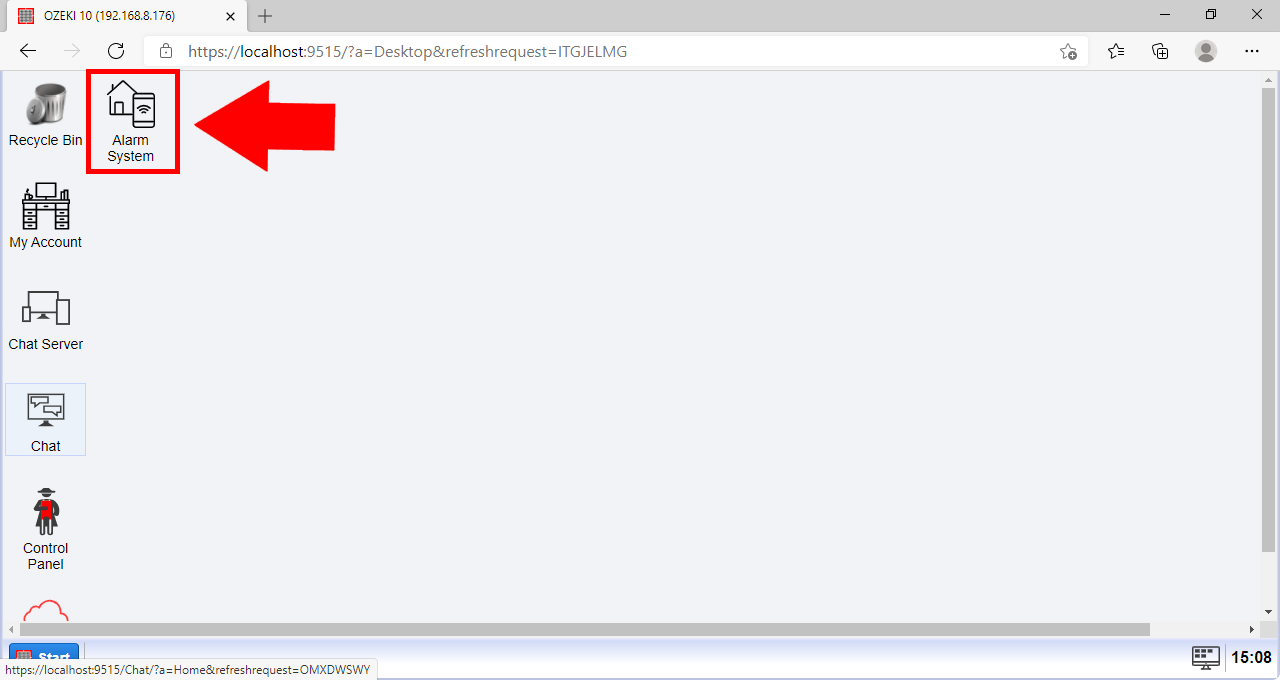
Now, you need to add a new notification channel, which will notify you in case of a predetermined event. To add the new channel, click the Add new channel… button located on the left side of the screen. You can see where to click on Figure 2.
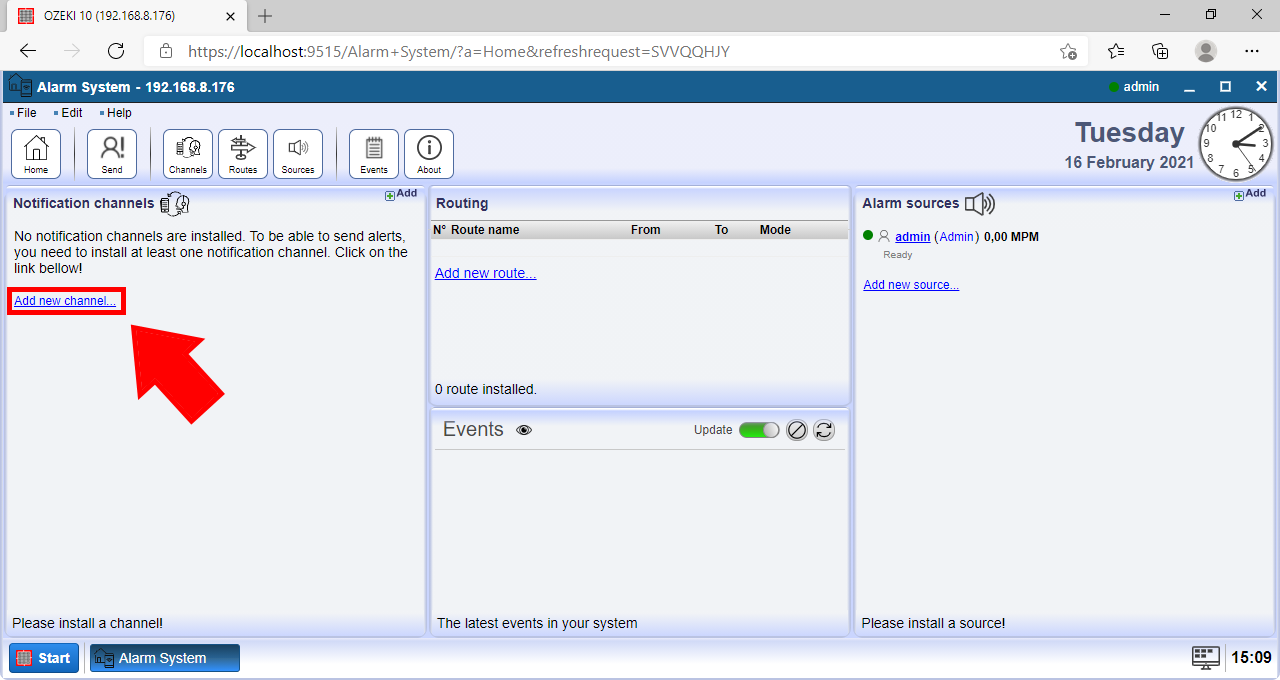
Now you need to choose which type of notification channel you wish to install. You can see all your options on Figure 3. The SMS connections can handle your data transfer between applications and mobile network. Click the Install button located next to the SMS connections title.
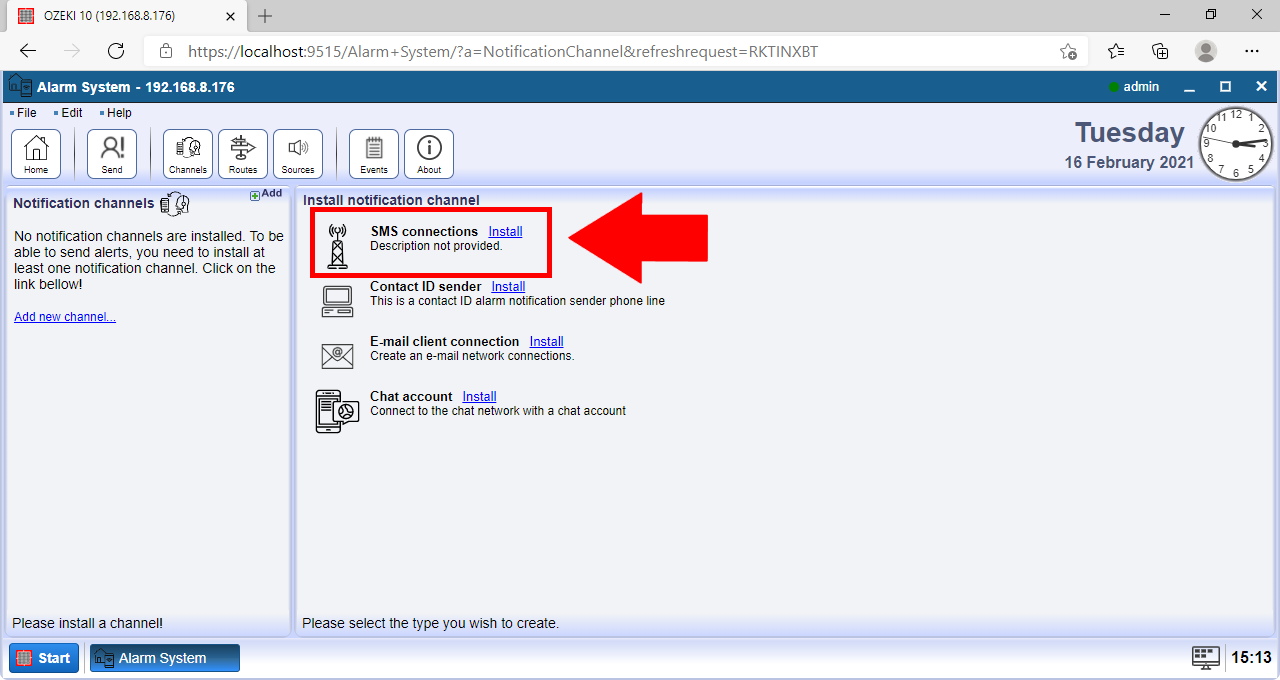
Here you will see multiple types of SMS Connections to choose from. Please choose the SMPP Client, which is the second on the list. On Figure 4, you could see where to click.
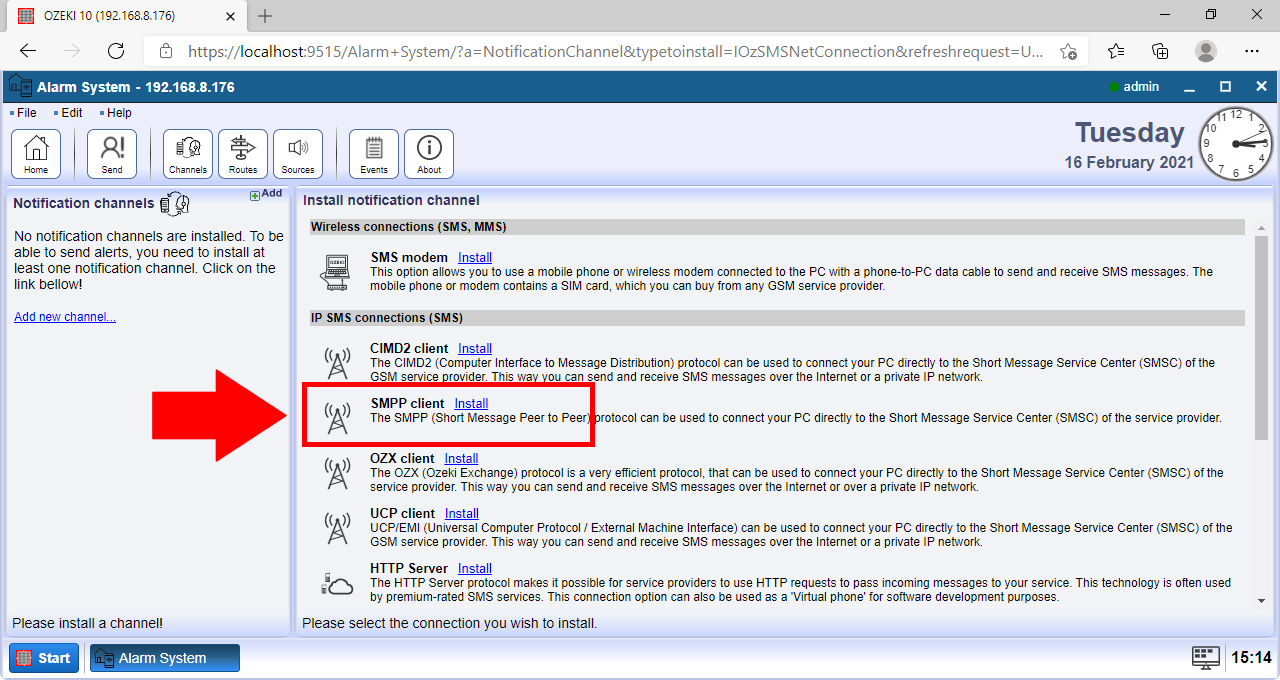
Now you need to name you connection. Make sure to name the connection something that you can distinguish it from other connections. If you look below, you could see the connection configuration panel. Here you need to provide the hostname or IP address and the port numbers of the remote server. The IP address could be IPv4 or IPv6 address. The Username and the Password will make sure that the connection could only be used by a person with the permission to use it. You can see the settings on Figure 5.
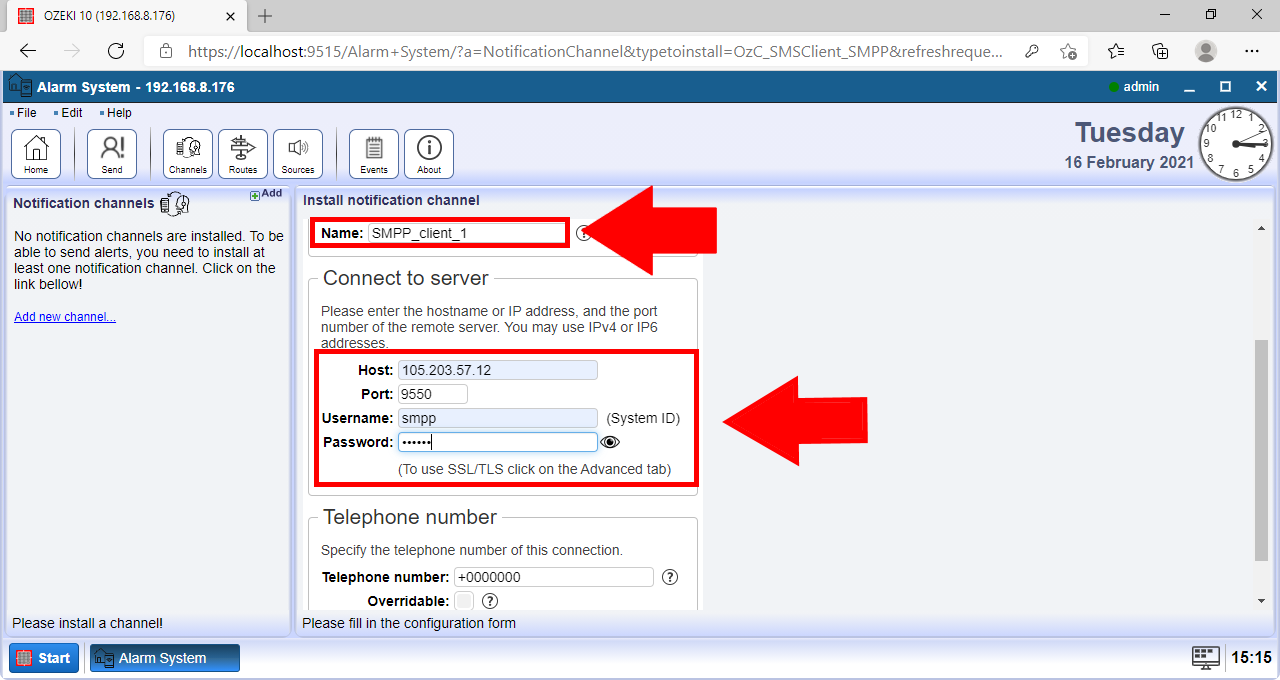
More options are located in the Advanced tab. Here you can setup a Log level. A log is used to track all your communication activities within your server. It is important, because this way you will have a formal recording of all the event occurred on the server. You can on see Figure 6, which boxes to tick in if you wish to log the happenings on your connection.
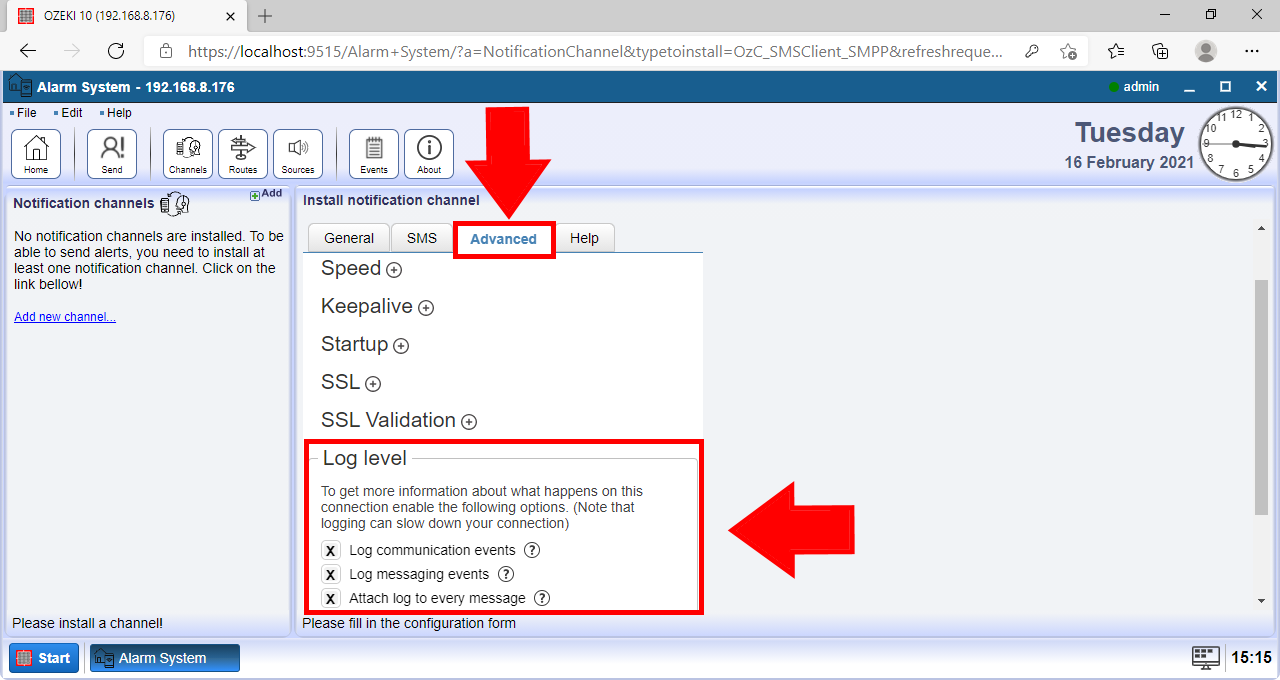
Now you are finished with setting up the SMPP Client. All you need to do now is to turn it on. You can do this with the help of the connection indicator located on the left side of the screen, as you can see on Figure 7. Turn it on and you can see on the Events tab that the connection is live.

